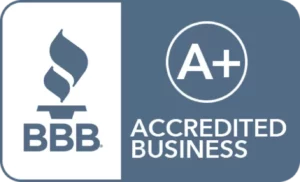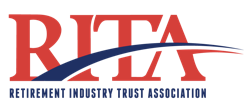Self-Directed IRA Custodian
Millions of IRA holders still aren’t familiar with the basics of a Self-Directed IRA or a Self-Directed IRA custodian. While some may know of Self-Directed IRAs, they don’t understand the difference between it and a traditional bank or financial institution.
Currently, the majority of 50 million IRAs invest in traditional asset investments. This includes stocks, mutual funds and ETFs. However, since the 2008 financial crisis, retirement account investors have become more aware of the advantages of alternatives assets, like real estate. They’re beginning to see it better diversifies their retirement account investment portfolio while acting as a hedge against inflation.
Aside from life insurance, collectibles and certain self-dealing and conflict-of-interest transactions, an IRA can hold alternative assets. So why don’t more retirements know about Self-Directed IRAs?
The reason is simple. Most banks/financial institutions that offer retirement accounts don’t allow their clients to invest in alternative assets because they don’t earn fees that way. An IRA custodian can choose what types of IRS approved investments its clients can invest in.
A Self-Directed IRA custodian offers an alternative.
What is a Self-Directed IRA Custodian?
A Self-Directed IRA custodian (aka, passive custodian) allows IRA holders to engage in non-traditional investments. It doesn’t offer investment advice or sell investment products. It earns its fees from the custody and administration of alternative asset investments the IRS approves, and the IRA or another retirement plan owns.
In other words, to establish an individual retirement account, one must open the IRA at a bank, financial institution or authorized trust company, such as IRA Financial Trust.
The IRA custodian is responsible for maintaining and administering the IRA and complying with all IRS reporting requirements regarding the IRA. This includes filing IRS Forms 5498 and 1099-R.
For most IRA holders who have an IRA with a bank or financial institution, the IRA custodian could have a fiduciary, or at least a “best interest” responsibility. This depends on whether a registered investment advisor is involved.
Responsibilities of a Self-Directed IRA Custodian
Do you want to make alternative asset investments with your IRA? Understand that the custodian is not a fiduciary because it does not provide investment advice. Its primary responsibility is to facilitate transactions the IRA holder directs.
Other responsibilities include taking custody of the alternative asset investments the IRA owns. However, the custodian is not responsible for reviewing the transaction or performing any due diligence. Hence the name “Self-Directed.”
Below is a list of four important things to know about the role of a self-directed IRA custodian.
1. Opening an IRA with a Self-Directed IRA Custodian
You must open a Self-Directed IRA with a special custodian. This is known as a passive custodian. This custodian will allow for alternative asset investments, like real estate.
The self-directed retirement industry was born in order to serve the need for retirement investors to make IRS approved alternative asset investments using their retirement funds. This is because not all IRA custodians allow their clients to make alternative investments.
In fact, almost all banks and financial institutions (IRA custodians) do not allow their clients to use IRA funds to make alternative asset investments because they do not make any money from those investments.
Each IRA custodian is free to determine what IRS approved investments will be available to their clients.
2. A Self-Directed IRA Custodian Has Less Responsibility
The U.S. Securities and Exchange Commission (SEC) does not treat the self-directed IRA custodian as a fiduciary. Additionally, it does not sell investment products, or provide investment advisory services. Again, its sole responsibility is to facilitate non-prohibited alternative asset investments the IRA holder directs it to make.
In other words, the self-directed retirement custodian serves the growing demand from retirement account holders who wish to make IRS approved alternative asset investments that traditional financial institutions do not serve.
The custodian will make the alternative asset self-directed retirement investment on behalf of the IRA owner. It also provides custody services. In addition, it cannot offer legal or tax advice.
3. Responsibilities of the Self-Directed IRA Custodian
The custodian is responsible for taking care of all IRS reporting with respect to the IRA. This includes filing IRS Form 5498 and 1099-R. Additionally, it will take care of paying all expenses, such as property taxes on a real estate investment, with respect to the IRA transaction.
4. Checkbook Control
If you wish to have a self-directed IRA with “checkbook control“, make sure the custodian has experience to custody and facilitate such investments.
A Self-Directed IRA with checkbook control is an investment solution where the IRA is owner of the LLC. The IRA holder (you) then manages the LLC. It offers you limited liability protection in connection with the IRA alternative asset investment.
If you want to make alternative asset investments with your retirements funds, understand that the custodian is not treated as a fiduciary by the SEC. Additionally, it’s important that you perform due diligence regarding investments and seek advice from a financial professional where appropriate.
Get in Touch
If you still have questions about the role of a Self-Directed IRA custodian, contact IRA Financial Trust directly at 800-472-0646. We look forward to your call.











